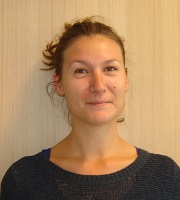Thesis defense by Morgane BONNEL
New generation of optical chemical sensors: study of a microstructured architecture fluorescent channel waveguide / diffraction gratings developed by sol-gel route

|
Prof. |
S.Callard |
INL, Ecole Centrale de Lyon, Lyon (France) |
Examinatrice / Présidente du jury |
|
Prof. |
G.Chadeyron |
ICCF, Ecole SIGMA Clermont, Aubière (France) |
Rapporteuse |
|
DR. |
O.Soppera |
IS2M, CNRS, Mulhouse (France) |
Rapporteur |
|
Talent Manager |
E.Meurville |
EPFL, VP RHO, Lausanne (Suisse) |
Examinateur |
|
MC |
A.Morand |
IMEP-LAHC, Université Grenoble Alpes, Grenoble (France) |
Examinateur |
|
DR. |
M.Langlet |
LMGP, CNRS, Grenoble (France) |
Directeur de thèse |
|
MC |
D.Riassetto |
LMGP, Grenoble INP, Grenoble (France) |
Co-encadrant de thèse |